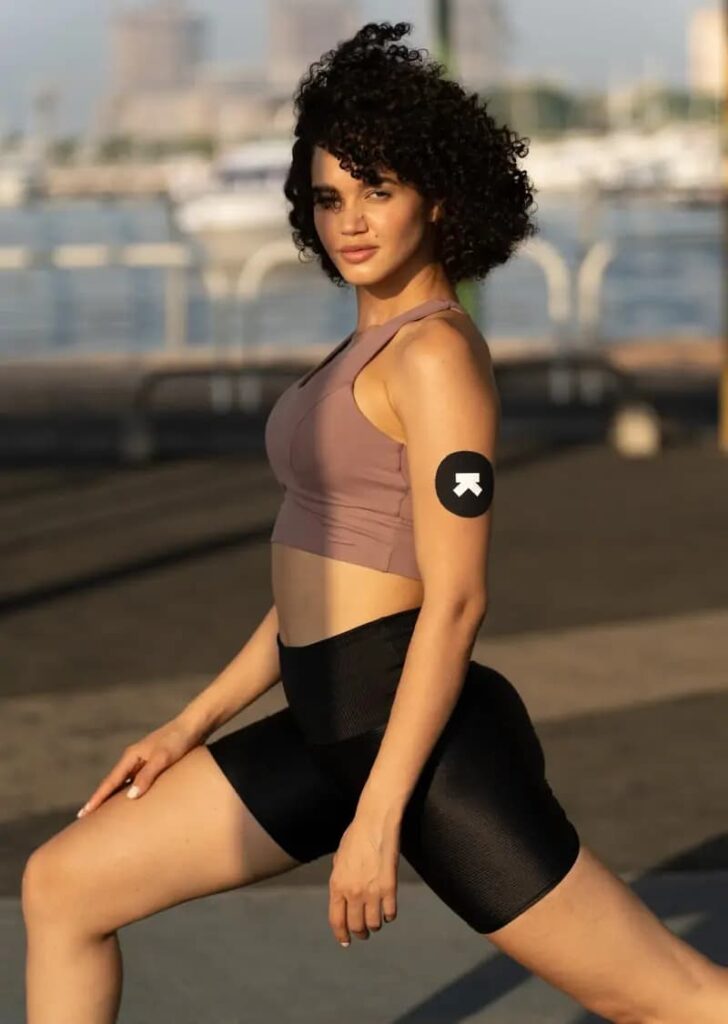Everyone has opened their Ultrahuman app and discovered their HRV is low. You might feel a little tired, but nothing out of the ordinary – so what does it mean?
Heart rate variability (HRV) can feel like an abstract score. But low HRV is more than just another stat in your Ultrahuman dashboard – it’s your body’s early-warning system. And when this warning light starts flashing, it’s time to take note.
HRV can indicate a wide range of issues, from illness to overtraining or even a glass of wine before bed. But sustained, low HRV can indicate chronic stress, which can have a significant impact on health.
We demystify the link between stress and HRV patterns, showing how to interpret your data and use it to protect your health.
What is HRV?

When your heart beats, the interval from one beat to the next isn’t perfectly even. For example, if your heart rate is 60 beats per minute, it doesn’t mean it beats exactly once every second – some gaps may be 0.9 seconds, others 1.1 seconds.
Heart rate variability (HRV) is the variability between consecutive heartbeats, measured in milliseconds (ms). A high variation is good – and shows your body is ready to fire into life and deal with the stresses and fluctuations of the day. You can read our full guide to HRV here.
The HRV is intricately connected to your autonomic nervous system (ANS), which detects and sends signals through your body and keeps it running according to its demands. The ANS balances two responses that work in opposition to each other: the “fight-or-flight” response and the “rest and digest” response. The branches are essentially two nervous systems: the sympathetic nervous system and the parasympathetic nervous system, respectively.
Heart rate variability (HRV) reflects the constant push-pull between these two systems. It drops during the “fight-or-flight” phase as your heartbeat becomes more uniform, and rises during the “rest and digest” phase as your heartbeat adapts quickly.
The physiology of HRV and stress
Far from being purely psychological, poorly timed stress or chronic stress can lower HRV.
Your body is primed to handle stress in the morning, which is a great time to be productive and creative at work. But that same stress in the evening can delay the onset of sleep and prevent restorative sleep from occurring. That’s why the Ultrahuman Stress Rhythm Score links stress timing to your circadian rhythm. Read more about the timing of stress here:
Stress leaves its fingerprints on your nervous system, raising blood pressure, increasing inflammation, and adding cardiovascular load – all of which depress HRV. The sympathetic nervous system dominates, and the parasympathetic nervous system is suppressed; as a result, resilience suffers.
Short-term stress, like a presentation or a tough workout, can temporarily lower HRV. But, chronic stress – weeks of pressure, poor recovery, or sleep debt – suppresses HRV more consistently.
Sustained low HRV can be a sign of chronic stress or strain and has been associated with conditions like burnout, but it is not a diagnosis on its own. If low HRV persists despite rest and lifestyle changes, consult a healthcare professional.
What HRV can tell about your stress load?
Day-to-day dips in HRV aren’t always alarming. What matters is the trend. Healthy HRV fluctuates across days. A sustained drop over several days may indicate that the stress load is outweighing recovery. Moreover, sudden drops after intense workouts, waking up with consistently low HRV, or a flat HRV curve over weeks are signs of strain and deserve attention.
When your resting heart rate (RHR) is elevated and your HRV is low, it’s a strong indicator that you are distressed. It can happen due to various scenarios. For example, if you have had multiple days of hard training with no recovery, have consistently slept poorly, or are going through emotional conflict, anxiety, or grief.
Even before you feel overwhelmed, your HRV will be showing you red flags.
How to manage stress through HRV feedback
HRV isn’t a scoreboard – it’s a feedback loop. Use it to make smarter choices, not to judge yourself.
Here are a few ways you can use its warning signs to manage stress.
- Sleep and rest: Prioritize rest, try to keep consistent sleep and wake times, and avoid alcohol, which suppresses HRV.
- Breathwork: Slow breathing activates the vagus nerve, raising the HRV.
- Active rest: Gentle movement, such as yoga or walking, helps your body without adding a stress load.
- Modify training: Swap intense workouts for lighter sessions when HRV is consistently low.
- Time off: Resting before breakdown is far more effective than recovering from it.
Sometimes, consistently low HRV is more than just “stress.” It can reflect deeper health concerns like burnout or chronic fatigue, depression or anxiety disorders, or overtraining syndrome in athletes.
If your HRV stays low despite rest and lifestyle changes, consult a healthcare provider. HRV is a tool, not a diagnosis.
Summary
HRV reflects your body’s real stress load – physical, psychological, or both. Even if you “feel fine,” your nervous system may be signaling otherwise. The good news: HRV empowers you to act early.
Track your trends, prioritize recovery, and listen when your numbers dip. Your body is speaking – HRV helps you hear it.
References
- Thayer JF, Ahs F, Fredrikson M, Sollers JJ 3rd, Wager TD. A meta-analysis of heart rate variability and neuroimaging studies: implications for heart rate variability as a marker of stress and health. Neurosci Biobehav Rev. 2012 Feb;36(2):747-56. Epub 2011 Dec 8. PMID: 22178086.
- Shaffer F, Ginsberg JP. An Overview of Heart Rate Variability Metrics and Norms. Front Public Health. 2017 Sep 28;5:258. PMID: 29034226; PMCID: PMC5624990.
- Kim HG, Cheon EJ, Bai DS, Lee YH, Koo BH. Stress and Heart Rate Variability: A Meta-Analysis and Review of the Literature. Psychiatry Investig. 2018 Mar;15(3):235-245. Epub 2018 Feb 28. PMID: 29486547; PMCID: PMC5900369.
- Sammito S, Thielmann B, Böckelmann I. Update: factors influencing heart rate variability-a narrative review. Front Physiol. 2024 Aug 6;15:1430458. PMID: 39165281; PMCID: PMC11333334.
- Koenig J, Thayer JF. Sex differences in healthy human heart rate variability: A meta-analysis. Neurosci Biobehav Rev. 2016 May;64:288-310. Epub 2016 Mar 7. PMID: 26964804.
- Ultrahuman Blog: Heart rate variability (HRV): What’s normal – and how to increase it.
- Honkalampi K, Järvelin-Pasanen S, Tarvainen MP, Saaranen T, Vauhkonen A, Kupari S, Perkiö-Mäkelä M, Räsänen K, Oksanen T. Heart rate variability and chronotype – a systematic review. Chronobiol Int. 2021 Dec;38(12):1786-1796. Epub 2021 Jun 16. PMID: 34130562.
- Stanley J, Peake JM, Buchheit M. Cardiac parasympathetic reactivation following exercise: implications for training prescription. Sports Med. 2013 Dec;43(12):1259-77. PMID: 23912805.
- Lennartsson AK, Jonsdottir I, Sjörs A. Low heart rate variability in patients with clinical burnout. Int J Psychophysiol. 2016 Dec;110:171-178. Epub 2016 Aug 14. PMID: 27535344.
- Laborde S, Allen MS, Borges U, Dosseville F, Hosang TJ, Iskra M, Mosley E, Salvotti C, Spolverato L, Zammit N, Javelle F. Effects of voluntary slow breathing on heart rate and heart rate variability: A systematic review and a meta-analysis. Neurosci Biobehav Rev. 2022 Jul;138:104711. Epub 2022 May 24. PMID: 35623448.
- Ultrahuman Blog: The vagus nerve and HRV: How to unlock your parasympathetic superpower.







